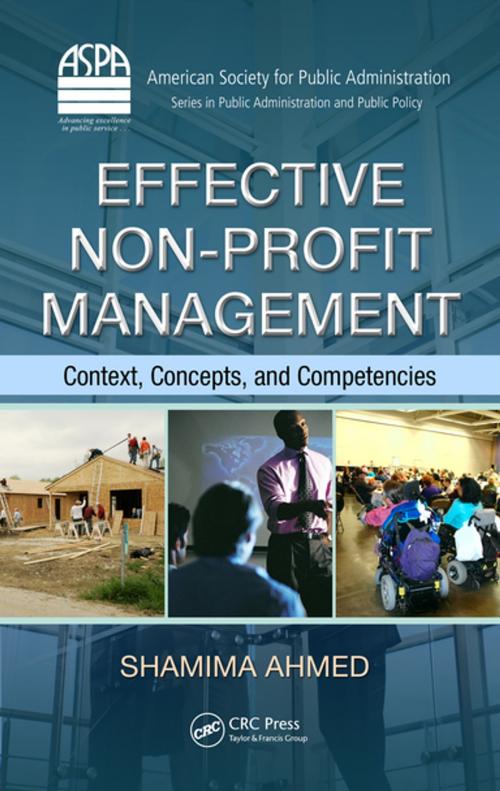Effective Non-Profit Management
Context, Concepts, and Competencies
Nonfiction, Social & Cultural Studies, Political Science| Author: | Shamima Ahmed | ISBN: | 9781351568746 |
| Publisher: | Taylor and Francis | Publication: | September 25, 2017 |
| Imprint: | Routledge | Language: | English |
| Author: | Shamima Ahmed |
| ISBN: | 9781351568746 |
| Publisher: | Taylor and Francis |
| Publication: | September 25, 2017 |
| Imprint: | Routledge |
| Language: | English |
In an environment of increased interdependency and collaborations among non-profits, for-profits, and governmental organizations, researchers and practitioners have begun to identify the need for a distinctive set of values, skills, and competencies for effective non-profit management. Underlining the relationship between these two sectors, Effective Non-Profit Management: Context, Concepts, and Competencies clarifies the emerging links between the public and non-profit sectors at the local, national, and global levels.
Each chapter concludes with a discussion of a recent issue and a case study. They include discussion questions, a listing of Web resources, and a review of terms at the end of each chapter. The introductory chapter discusses non-profit organizations, their phenomenal growth, the different categories of non-profits, and the scope and significance of this sector. The second chapter focuses on explaining the linkages among non-profits, for-profits, and government organizations. The next couple of chapters provide a detailed discussion of essential non-profit law, non-profit governance, human resource management, resource acquisition and management, marketing, technology, nongovernmental organizations (NGOs), and effectiveness. Discussing four major developments in the non-profit environment that have implications for the future of this sector, the book:
- Covers all major topics in non-profit management including recent issues that affect such management
- Provides up-to-date information on emerging issues in non-profit management, including transparency, technology, legal, and other socio-political issues
- Includes input from an advisory group of leading non-profit executives
- Details best practices, practical tips and examples, and lists of Internet resources
Going beyond the usual coverage of government contracting with non-profits, the book provides a focused discussion on the linkages between public administration and the non-profit sector. In an approach that balances theory and application, the book is a guide to the practical art of forming, managing, and leading non-profit organizations.
In an environment of increased interdependency and collaborations among non-profits, for-profits, and governmental organizations, researchers and practitioners have begun to identify the need for a distinctive set of values, skills, and competencies for effective non-profit management. Underlining the relationship between these two sectors, Effective Non-Profit Management: Context, Concepts, and Competencies clarifies the emerging links between the public and non-profit sectors at the local, national, and global levels.
Each chapter concludes with a discussion of a recent issue and a case study. They include discussion questions, a listing of Web resources, and a review of terms at the end of each chapter. The introductory chapter discusses non-profit organizations, their phenomenal growth, the different categories of non-profits, and the scope and significance of this sector. The second chapter focuses on explaining the linkages among non-profits, for-profits, and government organizations. The next couple of chapters provide a detailed discussion of essential non-profit law, non-profit governance, human resource management, resource acquisition and management, marketing, technology, nongovernmental organizations (NGOs), and effectiveness. Discussing four major developments in the non-profit environment that have implications for the future of this sector, the book:
- Covers all major topics in non-profit management including recent issues that affect such management
- Provides up-to-date information on emerging issues in non-profit management, including transparency, technology, legal, and other socio-political issues
- Includes input from an advisory group of leading non-profit executives
- Details best practices, practical tips and examples, and lists of Internet resources
Going beyond the usual coverage of government contracting with non-profits, the book provides a focused discussion on the linkages between public administration and the non-profit sector. In an approach that balances theory and application, the book is a guide to the practical art of forming, managing, and leading non-profit organizations.















